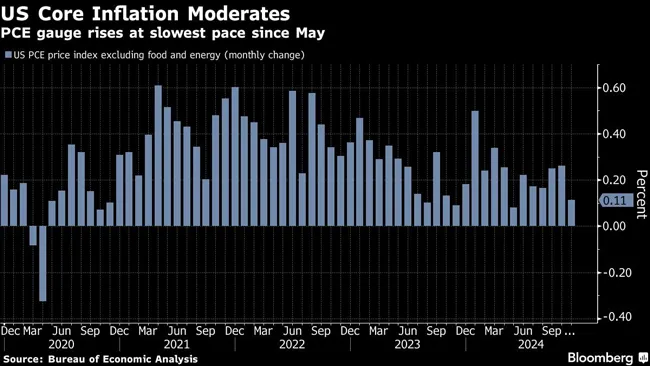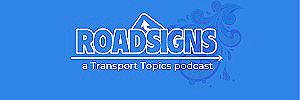Inflation Slows, Boosting Hopes for Deeper Rate Cuts in 2025

[Stay on top of transportation news: Get TTNews in your inbox.]
The Federal Reserve’s preferred measure of underlying inflation was muted in November, a step in the right direction for policymakers looking to cut interest rates further in 2025.
The so-called core personal consumption expenditures price index, which excludes food and energy items, increased 0.1% from October and 2.8% from a year earlier, according to Bureau of Economic Analysis data out Dec. 20. The monthly advance was the slowest since May.
The data marks one of the first reports indicating renewed progress on inflation after stalling in recent months. That had prompted Fed officials to update forecasts earlier this week showing a higher path for prices and interest rates in 2025, which helped trigger a broad market selloff.
Treasury yields and the dollar remained lower after the release. The S&P 500 was trading higher as of 10:28 a.m. in New York.
“Overall, this is just what the Fed ordered — U.S. economic strength continues, but with muted price pressures,” Paul Ashworth, the chief North America economist at Capital Economics, said in a note.

(Bloomberg)
New York Fed President John Williams, speaking on CNBC just minutes after the release of the data, called the latest numbers “encouraging,” adding that he expects the central bank to continue moving its benchmark rate down toward a neutral level.
Speaking before the numbers were released, San Francisco Fed President Mary Daly said she is “very comfortable” with policymakers’ median projection of two interest-rate cuts next year, emphasizing the central bank can turn to a slower approach.
Details on prices showed a broad-based deceleration. Core services prices — a closely watched category that excludes housing and energy — rose 0.2% from a month earlier, the slowest since August. Core goods prices — which excludes food and energy — fell for the first time in three months.
Experts from Sailun Tires dive into strategies for managing tire expenses amid a challenging freight market. Tune in above or by going to RoadSigns.ttnews.com.
The report also showed healthy increases in incomes and spending. Adjusted for inflation, spending advanced 0.3%, indicating consumer resilience during the critical holiday shopping season.
That was mostly driven by purchases of goods, which rebounded from the prior month due in part to cars. Meanwhile, real spending on services was the weakest since the start of the year.
Spending continues to be supported by solid earnings. Wages and salaries grew 0.6% in November, the most since March. However, overall disposable income rose just 0.3%, restrained by declines in dividend income and government benefits.
A separate report Dec. 20 from the University of Michigan showed consumer sentiment rose in December for a fifth straight month and inflation expectations picked up from November. Both releases followed data from the BEA out Dec. 19 which showed the economy expanded at a faster pace in the third quarter than previously estimated, thanks in part to higher consumer spending.
Want more news? Listen to today's daily briefing below or go here for more info:





